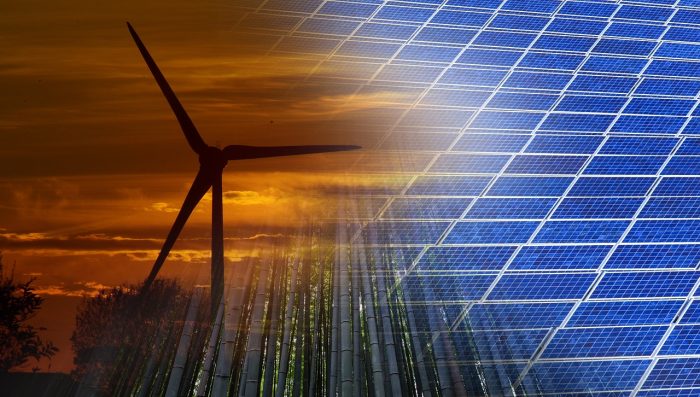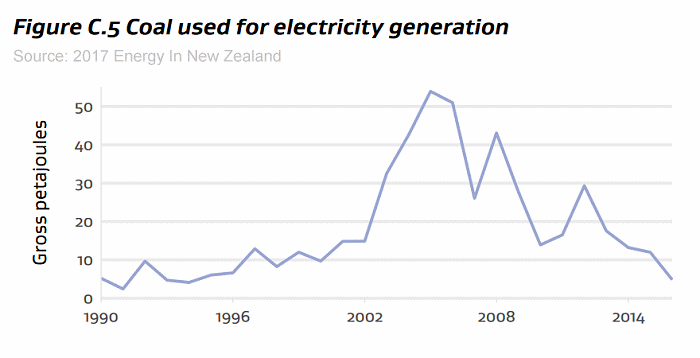
Image: seagul
As part of a deal with the Green Party, New Zealand’s new government will accelerate and boost its renewable energy goals.
Prior to the deal being struck, Labour had committed to at least 90% of New Zealand’s electricity coming from renewable sources by 2025, with “close to 100%” being generated by renewables by 2040.
According to a confidence & supply agreement between the Labour Party and the Green Party, the nation’s Climate Commission will be requested to plan the transition to 100% renewable electricity by 2035. The 100% is based on a “normal hydrological year” (New Zealand relies heavily on hydro power).
Even preliminary details concerning reaching the new target are scant at this stage, but it seems the installation of solar panels on schools will be investigated as part of this goal.
Among Labour’s other commitments, the party will set a target of net zero greenhouse gas emissions for the nation by 2050, with legally binding emissions reduction targets.
“The transition will take full advantage of New Zealand’s plentiful renewable resources and of existing and emerging technologies worldwide,” says the party’s climate change manifesto.
New Zealand doesn’t have all that far to go in order to reach the 100% renewables goal. Last year, nearly 85% of electricity generation in the land of the long white cloud came from renewable resources; primarily hydro, geothermal and wind. In 2016, New Zealand’s renewable electricity percentage was the third highest in the OECD.
Solar power is yet to really catch on in the country, but its presence is growing. According to the 2017 Energy In New Zealand report, total generation from small-scale solar power systems last year was estimated at 51.7 GWh, up 52% over 2015. Installed solar capacity at the end of December 2016 was 47.0 MW.
Coal had a shocker of a year in 2016, with the amount of the filthy fossil fuel used for electricity generation falling to its lowest level since 1994, due in part to the rise of renewables.
Coal production in New Zealand plummeted 15% in 2016 to its lowest level since 1991. The country has extensive coal resources, estimated at over 15 billion tonnes (all coal types). How much of that the new government will attempt to keep in the ground is unclear. Last month, Greenpeace slammed Labour’s leader and the new Prime Minister, Jacinda Ardern, after Ms. Ardern reportedly refused to rule out an end to new coal mines.


 RSS - Posts
RSS - Posts



I reiterate – such information as
”
According to the 2017 Energy In New Zealand report, total generation from small-scale solar power systems last year was estimated at 51.7 GWh, up 52% over 2015. Installed solar capacity at the end of December 2016 was 47.0 MW.
”
would be of more value, if the quantities are expressed both as “per head of population”, or, “per thousand head of population”, quantities, and, as percentages of total energy (both of capacity, and of production/consumption).
I do not belittle the report – it is very important.
I am instead, saying that the information would be of more value, and, better, in terms of comparisons, when expressed in these terms.
For example, it could be that NZ, with less available solar energy, produces more electricity from domestic rooftop photovoltaic systems , per thousand head of population, than Australia, with the NZ government encouraging the use of clean energy, and the Australian federal government doing all that it can, to prevent the use of clean energy.
Another set of information, that I suggest could be interesting and useful, given that the population of NZ is apparently about the same as some of the larger states, or, possibly, the largest state (in terms of population) in Australia, and, given that today, the CER has advised of its September 2017 figures for photovoltaic installations in Australia, including
“There were 132 PV systems that had a concurrent battery storage installation in September.”
would be to publish the number of domestic rooftop photovoltaic systems installed, per quantity (eg, 1000) of households, and, similarly, for associated battery storage installations, for each of the states/territories of Australia, and, for NZ.
I suggest that the set of information could be quite interesting.